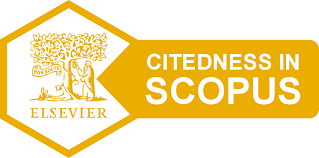Financing Growth Analysis in BMT Al-Furqan Padang Sibusuk
DOI:
https://doi.org/10.29240/alfalah.v7i1.4312Keywords:
Analysis, BMT, Growth, FinancingAbstract
Purpose: This study aims to find out about the growth of financing for customers or members of BMT Al Furqan Padang Sibusuk in its role as a sharia microfinance institution to be a solution for small communities to get business capital and also to see the enthusiasm of the community in accessing financing for BMT Al Furqan Padang Sibusuk.
Design/Method/Approach: This research is a semi-quantitative research, a combination of analysis carried out qualitatively and quantitatively, in which the nature of the categories is analyzed qualitatively, while the characteristic values to be used are numerical values that resemble quantitative analysis.
Findings: After doing the research, it was found that the public's interest in getting access to financing at this microfinance institution was quite good, there was an increase in the amount of financing disbursed, and the amount of financing growth at BMT Al-Furqan Padang Sibusuk from the 2019 period and the 2020 period on financing products. Mudharabah and murabahah financing products experienced growth, namely the provision of mudharabah product financing in 2019 amounted to Rp.483.687.000 and grew in 2020 to Rp.529.228.000 (8,6 percent). Meanwhile, murabahah product financing in 2019 was Rp.892.839.000 rupiah and experienced growth in 2020 of Rp.1.537.940.000, - (41,1 percent). This microfinance institution has also provided many benefits, such as making it easier for members to get financing for business capital, especially micro and small businesses.
Originality/Values: To obtain information about the development of financing carried out by BMT Al Furqan Padang Sibusuk, Sijunjung Regency, where this Islamic microfinance institution or BMT is not yet well known to the people of Sijunjung Regency.
Downloads
References
Data laporan keuangan BMT Al Furqan tahun 2020
Dinas Koperasi, Perindustrian dan Perdagangan Kabupaten Sijunjung: 2020
Hamdi, Hartrisari Hardjomidjojo dan Amiruddin Saleh (2013). Kegiatan Simpan Pinjam Khusus Perempuan di Kecamatan Semparuk, Sambas: Jurnal; Bogor.
Hasan, Iqbal (2004). Analisis Data dengan Statistik Jakarta: Bumi Aksara.
Huda, Nurul &Haykal Mohamad (2010). Lembaga Keuangan Islam tinjauan teorities dan Praktis: Jakarta: Prenada Media Grup.
Khalid, Narbuko& Ahmadi`.(2002), Abu, Metodologi Penelitian, Jakarta: Bumi Aksara.
Mardani, Hukum Ekonomi Syariah di Indonesia (2011), Bandung: RefikaAditama
Obaidullah, Mohammed, (2008) Islamic Research and Training Institute, Member of Islamic Development Bank Group.
Rizky, Awalil, (2000). Strategi Jitu Investasi di UMK: Optimalisasi Kontribusi UMK dalam Makro Ekonomi Indonesia, Jakarta: Koperasi SyariahPermodalan.
Sa’ad, Said Marathon, (2007). Ekonomi Islam ditengah krisis Ekonomi Global. Jakarta: Zikrul Hakim.
Satori, Djam’an dan Komariah, Aan, (2010). Metodologi Penelitian Kualitatif. Bandung: ALFABETRA.
Soekanto, Soerjono, (1986). Pengantar Penelitian hokum. Jakarta: UI-Press.
Sugono, Bambang, (2007). Metode Penelitian Hukum. Jakarta: PT. Raja Grafindo Persada.
Sumawinata, Sarbini, (2004). Politik Ekonomi Karakyatan. Jakarta: PT. Gramedia Pustaka Utama.
www. Tirto.id Boediono dalam Ekonomi Indonesia Dalam Lintasan Sejarah : 2018
https://www.coursehero.com. diakses 30 Desember 2020
https://www.coursehero.com. diakses tanggal 4 Desember 2020
Downloads
Additional Files
Published
How to Cite
Issue
Section
Citation Check
License
Authors who publish with Al-FALAH : Journal of Islamic Economics agree to the following terms:
- Authors retain copyright and grant the journal right of first publication with the work simultaneously licensed under a CC BY-SA 4.0 Deed | Attribution-ShareAlike 4.0 International | Creative Commons (CC BY-SA 4.0) that allows others to share the work with an acknowledgment of the work's authorship and initial publication in this journal.
- Authors are able to enter into separate, additional contractual arrangements for the non-exclusive distribution of the journal's published version of the work (e.g., post it to an institutional repository or publish it in a book), with an acknowledgment of its initial publication in this journal.
- Authors are permitted and encouraged to post their work online (e.g., in institutional repositories or on their website) prior to and during the submission process, as it can lead to productive exchanges, as well as earlier and greater citation of published work (See The Effect of Open Access).







 This work is licensed under a
This work is licensed under a 